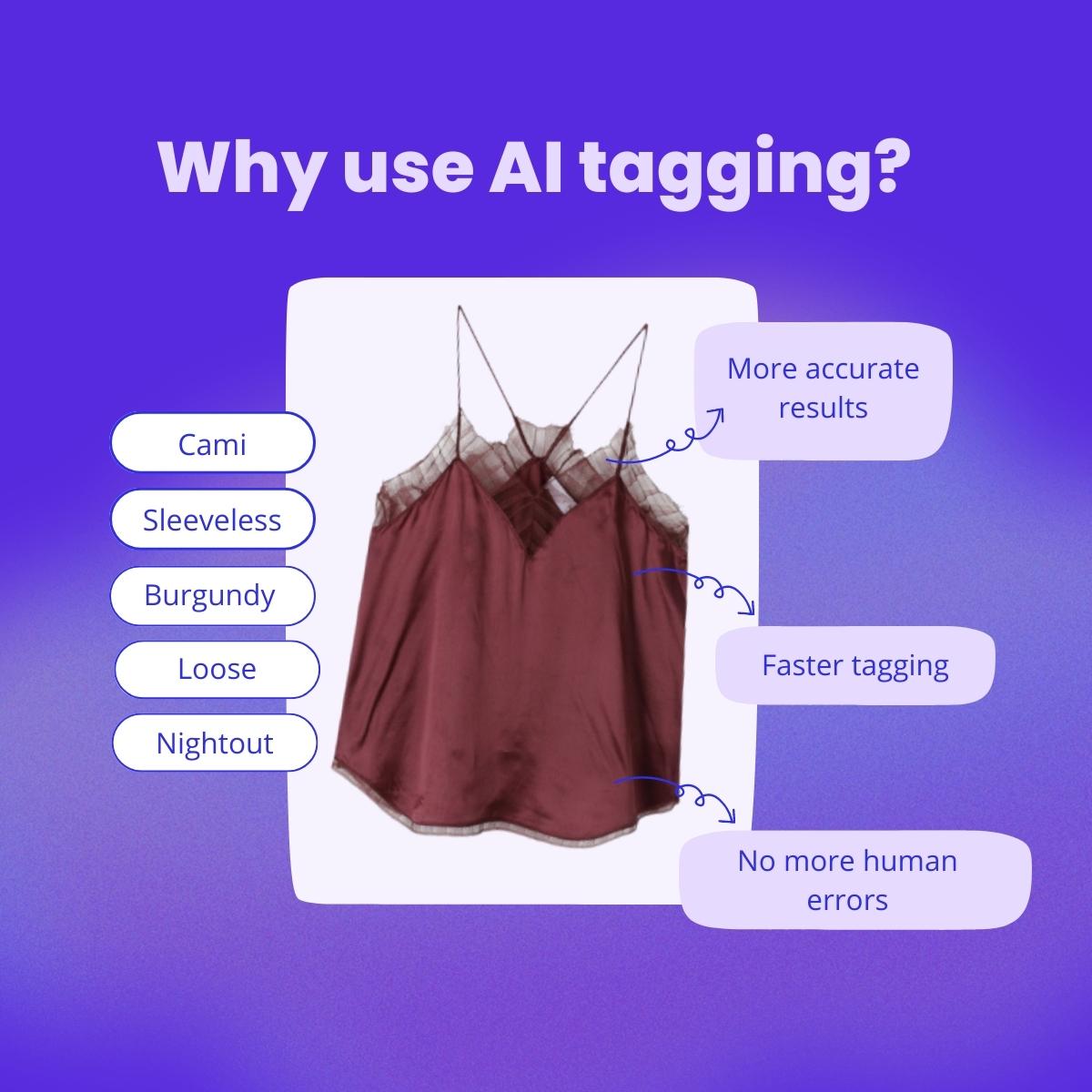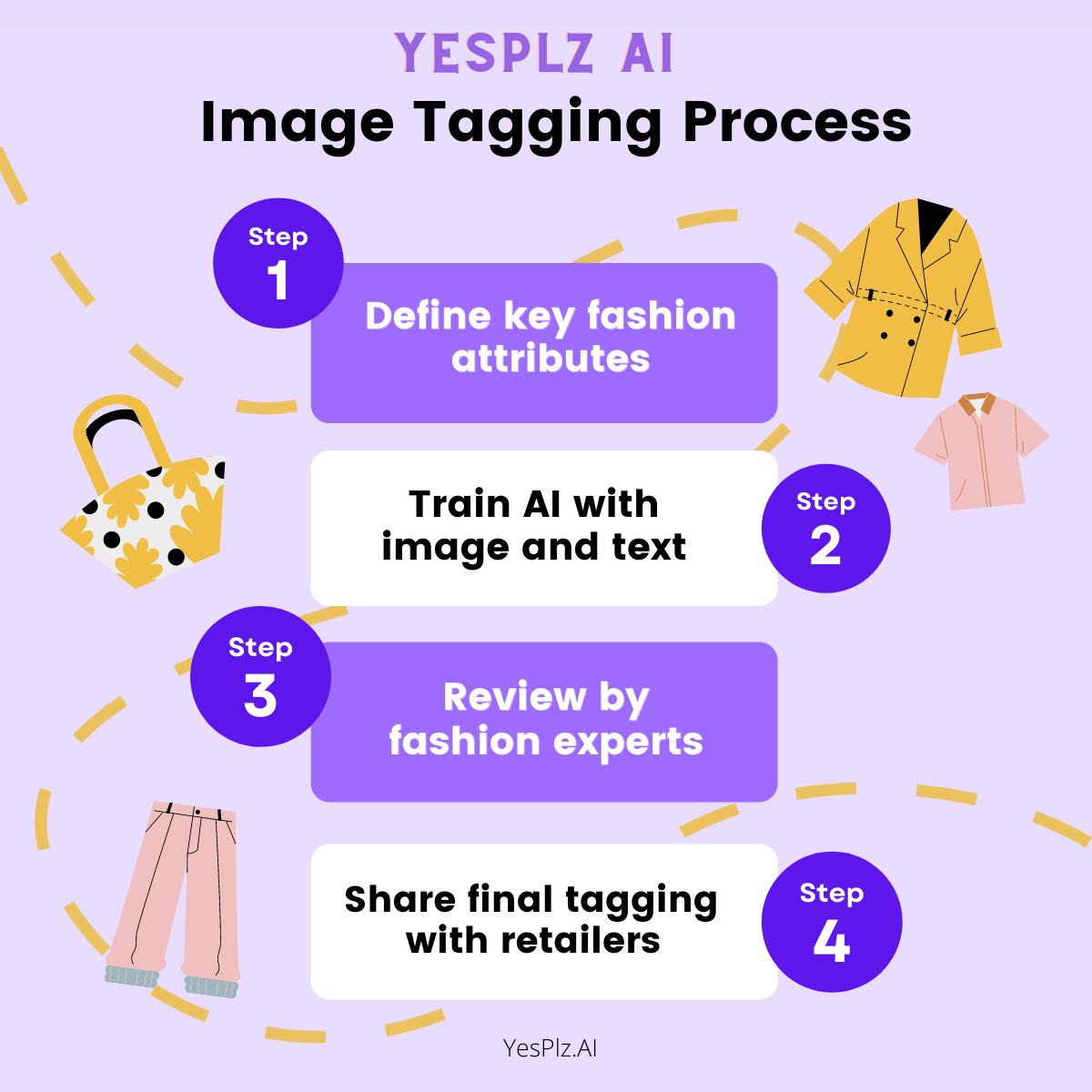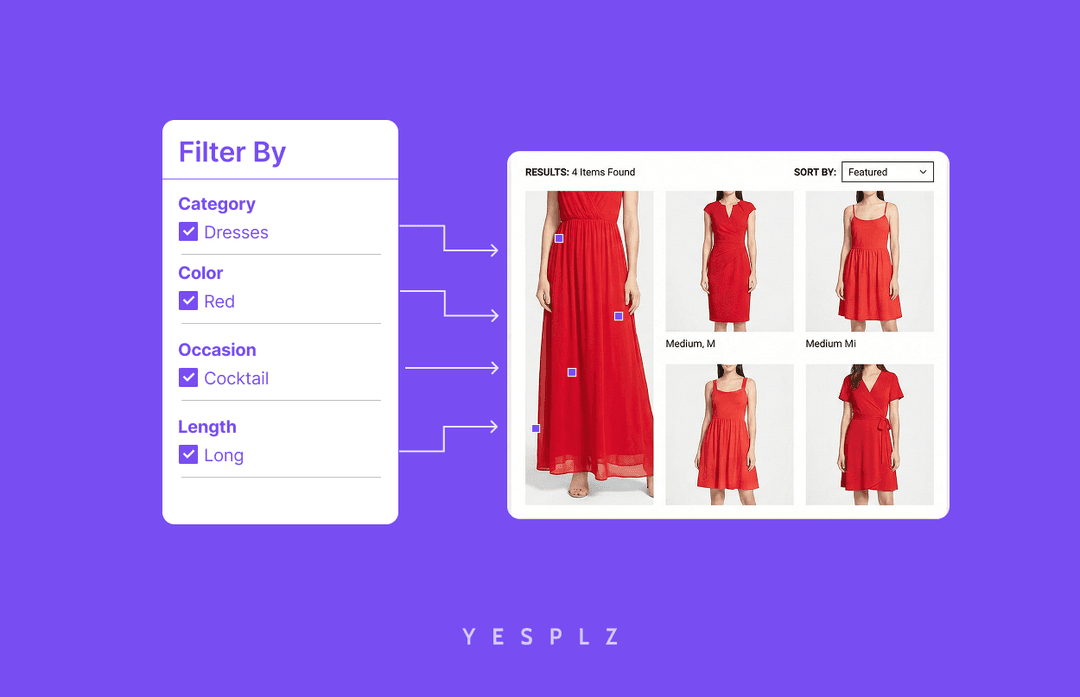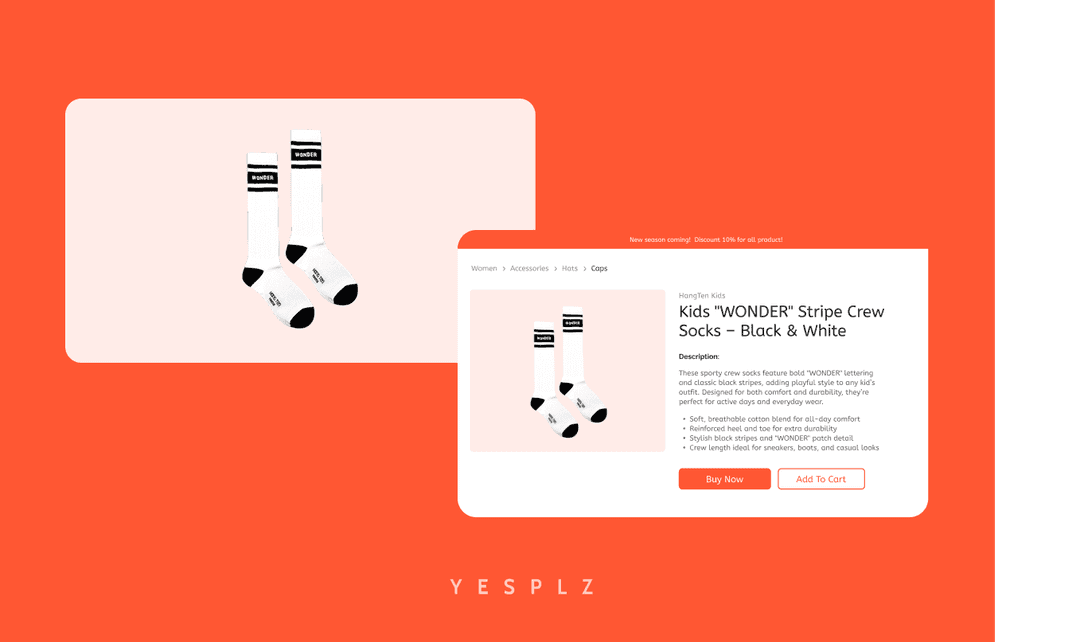A Breakdown
by Jess Erdman, Content Marketing LeadJanuary 2023

Image tagging for fashion refers to the process of annotating fashion images with descriptive keywords or labels that identify the features of the clothing and accessories in the image.
This can include information such as the type of clothing (e.g. shirt, dress, pants), the material (e.g. cotton, silk), the color, pattern, and brand, among others. The goal of image tagging is to help make fashion images searchable and easily discoverable.
Recently, new types of tags are becoming common in eCommerce: thematic tags (for example: “work” or “going out”) are becoming the expectation of shoppers when browsing their favorite looks.
However, as image tagging becomes more complex (from growing product catalogs; thematic tags; inconsistent third-party vendor information), it’s becoming more complicated to create accurate image tags manually.
Image tagging can either be done manually, or automated.
Manual image tagging is time-consuming and error-prone, because the language of fashion is inconsistent and constantly updated, making it difficult to keep up with, even for the most seasoned fashion professionals.

Automated image tagging, on the other hand, is an efficient and effective way to keep up with product catalogs. With lightning fast tagging abilities and automated product attribute recognition, automated image tagging is a good choice for fashion eCommerce brands looking to tag more efficiently, and improve eCommerce discovery.
However, not all image tagging solutions are the same–and that depends on the technology behind them.
When we talk about “automated” image tagging, we’re really talking about fashion artificial intelligence and deep product tagging.
Deep product tagging is the process of automatically assigning descriptive tags or labels to products in a database using deep learning techniques, a subfield of machine learning that uses artificial neural networks with multiple layers to model and solve complex problems. This enables easier search and organization of the products.
Fun fact: Deep learning is widely used in various applications, such as image and speech recognition, natural language processing, and self-driving cars.
When creating an automated image tagging system, computer vision is another core technology. Image recognition algorithms and neural networks are used to analyze the content of an image and identify objects, scenes, people, and other features. These algorithms learn from large datasets of annotated images, and can be fine-tuned for specific use cases, such as identifying specific objects or detecting specific attributes.
At YesPlz, we combine both image and text for our machine learning to create the most accurate product tags.

Other considerations to think about when analyzing an image tagging tool are both the quality of the tags (how accurate are the tags?), speed (slower tagging can create even more work for retailers), and specific tagging criteria like styles, details, or moods.
When asking “what is image tagging?” it’s also crucial to look at the benefits for retailers that are considering implementing it.
And, those benefits are essential. (Learn more benefits in details in our blog An Introduction To Automated Product Tagging: How It Can Benefit eCommerce)
Image tagging builds the foundation for effective eCommerce personalization. From text search to product recommendations, every search and discovery app relies on accurate product tags.
Automated image tagging also makes it easier for shoppers to discover their favorite products, despite complex fashion taxonomies.
From the retailer’s perspective, automated image tagging increases efficiency and productivity, allowing for more time to focus on other important tasks.
While there are many image tagging solutions on the market, it’s still difficult to find one that is consistent, fast, and accurate. And, with changing fashion styles and terminology, it’s important that an image tagging solution can keep up with the latest trends.
Are you curious to hear about the latest image tagging technology for fashion?
Written by Jess Erdman
Content Marketing Lead
I'm passionate about creating cool content. The best part? I get to learn new things about fashion tech and ecommerce everyday. Have an idea or opinion about this article? Reach out at jess@yesplz.ai

Stop losing sales to poor product filtering. Discover how AI simplifies creating Shopify filters, saving you 25-50 hours per 100 products.
by YesPlz.AI

Automate Shopify product pages and cut 50–100 hours of manual work. AI generates product titles, descriptions, and metadata instantly from product images.
by YesPlz.AI